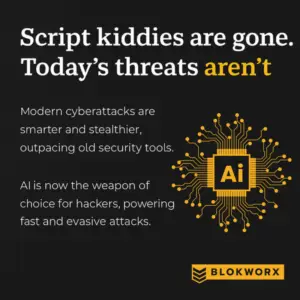Ransomware continues to be a pressing cybersecurity threat, causing significant disruptions and financial losses for individuals, businesses, and municipalities. The recent 2023 Dallas ransomware incident serves as a stark reminder of the devastating consequences of such attacks. This incident, not the first of its kind in Dallas, highlights the ever-present need for proactive cybersecurity strategies focused on ransomware prevention.
The Dallas Ransomware Incidents
The 2023 Dallas ransomware incident marks a distressing recurrence of the city’s encounter with this form of cyber-attack. In 2019, Dallas suffered a similar assault, crippling vital computer systems, which led to declaring a state of emergency. Once again, the attackers infiltrated the city’s network, encrypting sensitive data and rendering critical systems inoperable. This targeted attack impacted not only administrative functions but also disrupted crucial services, such as public transportation and utility management. The incident underscored the ever-evolving tactics employed by ransomware operators. It highlighted the need for constant vigilance and improved prevention-centric cybersecurity strategies.
The BLOKWORX threat intelligence team conducted rigorous testing on a simulated ransomware document similar to potential artifacts utilized during this recent event to ensure comprehensive protection against such attack methodologies. You can view snippets from that testing in this video. Following the conclusion of these simulated tests, we can confidently affirm that BLOKWORX effectively prevents this and similar threats.
- Our managed MDR platform consisting of industry leading EPP (endpoint protection platform) + EDR (endpoint detection and response), MAED, policy settings effectively prevented the identified threat.
- In addition, valued SCUD (Secure Cloud Unified Defense) partners, who have the BLOKWORX protection policy implemented for onboarded tenants are shielded against the associated phishing campaigns orchestrated in conjunction with these attacks.
- SNPR (Secure Network Perimeter Response) partners, likewise, benefit from robust safeguards. If any such links are present on threat intelligence blacklists, our firewall automatically blocks access. Our advanced zero-day file sandboxing technology acts as a preventive measure against potentially harmful files. SNPR diligently detects command and control traffic, effectively halting transactions and mitigating such attacks.
Ransomware Prevention
If you are not already a BLOKWORX partner, consider the following preventive actions. In addition, reach out to our team for a full demonstration of how our tools to defend against ransomware attacks:
- Heightened Cybersecurity Measures: Strengthen cybersecurity defenses by adopting multi-layered security measures, including firewalls, intrusion detection systems, and endpoint protection solutions. Regularly update security software and conduct vulnerability assessments to identify and address potential weaknesses.
- Audit Backups and Recovery Plans: Maintain up-to-date backups of critical data, stored securely offline or in the cloud. Develop and test comprehensive recovery plans to ensure a swift response in case of a ransomware attack.
- Employee Education and Training: Educate employees on the latest social-engineering techniques, phishing attacks, and safe computing practices. Promote a culture of cybersecurity awareness to prevent inadvertent exposure to malicious emails or websites.
- Patch Management: Keep software, operating systems, and applications up to date with the latest security patches to mitigate vulnerabilities exploited by ransomware.
- Incident Response and Business Continuity Planning: Establish an incident response plan. Outline clear steps to detect, contain, and eradicate ransomware infections. Develop business continuity plans to ensure essential services can continue operating during a disruptive event.
- External Collaboration and Threat Intelligence: Engage with cybersecurity experts, industry associations, and law enforcement agencies to stay informed about emerging ransomware trends. Receive and share threat intelligence to enhance preparedness and response capabilities.
The recent Dallas ransomware incident, along with the previous compromise in 2019, highlight the persistent threat posed by ransomware to municipalities and organizations alike. These incidents serve as potent reminders of the importance of proactive cybersecurity measures, ransomware prevention efforts, and employee training. By prioritizing robust cybersecurity practices, investing in defensive technologies, and fostering a resilient cyber posture, we can collectively mitigate the impact of ransomware and safeguard our digital environments.





